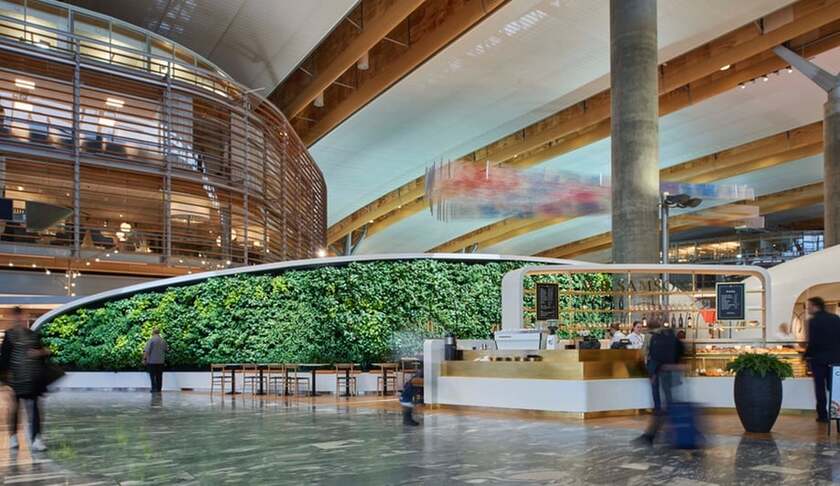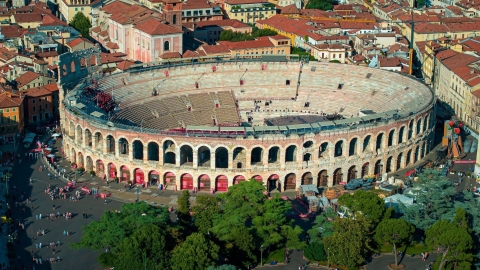Changi International Airport, Singapore
Changi International Airport is one of the key airports in Southeast Asia and is located in an important gateway to Asia in general, with a reputation as one of the top three 5-star airports in the world, according to Skytrax.
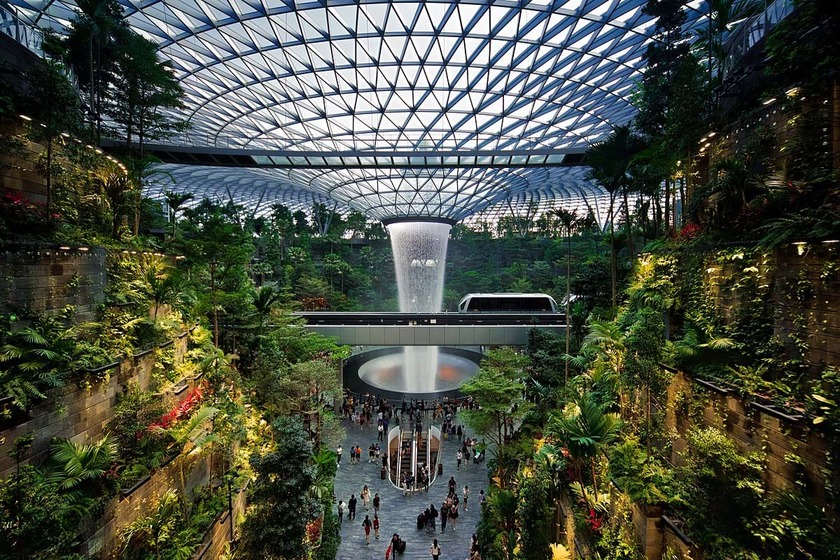
The Rain Vortex - the world's tallest indoor waterfall.
This airport is located in the Lion Island, equipped as a luxury shopping center. In the main hall of the airport, visitors can easily find high-end stores and many famous restaurants representing many cuisines from all over the world. The airport's special feature is a Rain Vortex waterfall dome up to 40 m high in a tropical garden with a variety of plants and trees.
Visitors can also watch free movies at the 24/7 cinemas or enjoy entertainment with devices such as the Xbox 360 or Kinect. With a reputation of being listed as one of the world's top airports for 12 consecutive years, Changi International Airport is truly a destination not to be missed.
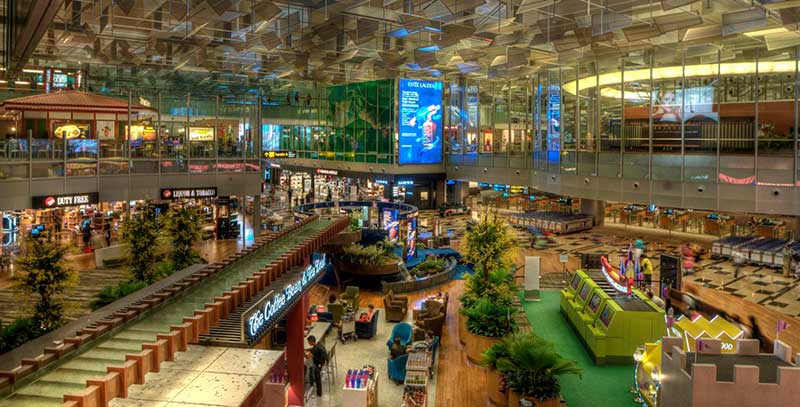
The place is equipped as a luxury shopping mall.
Beijing Daxing International Airport, China
Beijing Daxing International Airport (Beijing Daxing International Airport), ranked at the top of the list of the world's largest airports with an area of nearly 47 km². This airport was officially inaugurated in 2019 and is currently the largest in China.
The design of the airport terminal is inspired by the image of a phoenix spreading its wings. The architecture of this terminal is also compared to the shape of a starfish, called "Starfish". The dome of the terminal is made of more than 8,000 different pieces of glass, helping to take advantage of natural light optimally during the day and creating a more comfortable feeling of space. Inside the terminal, the decoration style combines traditional and modern cultural values, creating a unique and impressive space.

Overall design of Beijing Daxing International Airport.
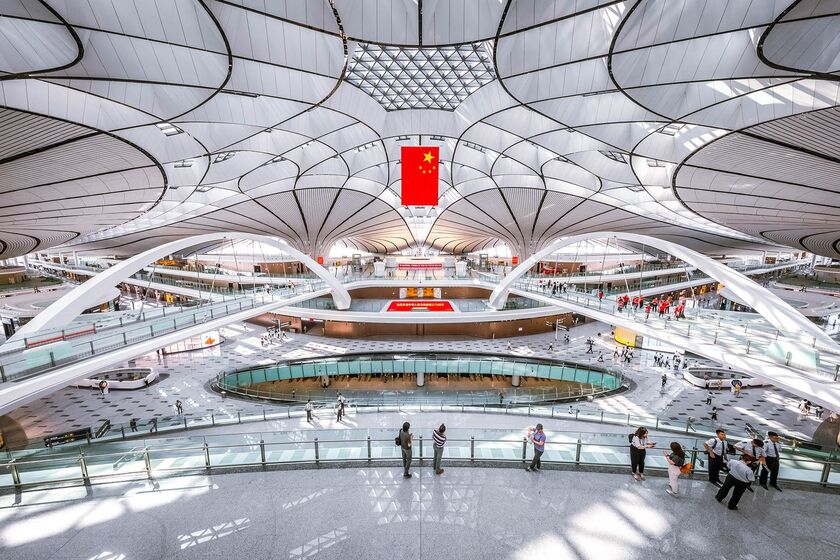
The airport's unique dome.
Chhatrapati Shivaji International Airport, India
Chhatrapati Shivaji International Airport has skillfully integrated Indian cultural elements into its architecture. The airport’s diamond-shaped dome is based on the shape of the peacock’s tail feathers, a symbol of India. The tall, sturdy pillars, colorful tables and chairs, and sparkling lights create a connection with the bustling, vibrant atmosphere of open-air markets in India.
In 2019, Chhatrapati Shivaji International Airport was honored in the "Best Airport by Size and Territory" award from Airports Council International (ACI), demonstrating the airport's excellence and outstanding quality.

The airport integrates indigenous cultural elements in its architecture.

The waiting room is luxurious and clean.
Incheon International Airport, South Korea
Incheon International Airport is the largest airport in South Korea. It is also one of the busiest airports in the world. To its credit, Incheon Airport has received several notable awards, including World's Best Transit Airport (2020) and Airport with the Most Modern Terminal (2020).
Incheon Airport is known for providing many facilities for passengers, including massage chairs, sleeping rooms and free showers, especially for those who are unfortunate enough to have a delayed flight. In addition, tourists can also enjoy activities such as golf, shopping, and many other facilities right in the lobby area of this airport.

This is one of the busiest airports in the world.
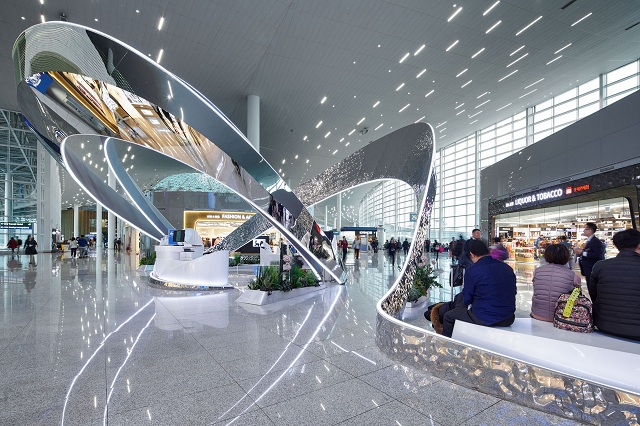
The interior impresses with its extremely modern design.
Oslo Airport, Norway
Oslo Airport is one of the best examples of sustainable design, aiming to protect the environment while still maintaining an elegant, minimalist look. Particularly located in the Nordic region with a cold climate all year round, the airport is built mainly of steel and glass to withstand harsh weather conditions. In the summer, the airport also takes advantage of excess snow from the winter to cool, helping to save energy and reduce the use of air conditioning.
In addition, the area around the airport is designed with many green trees, creating a friendly and cool space for visitors. With these efforts, Oslo Airport has been ranked as one of the most beautiful and environmentally friendly airports in the world.

This airport aims to be sustainable and protect the environment.
